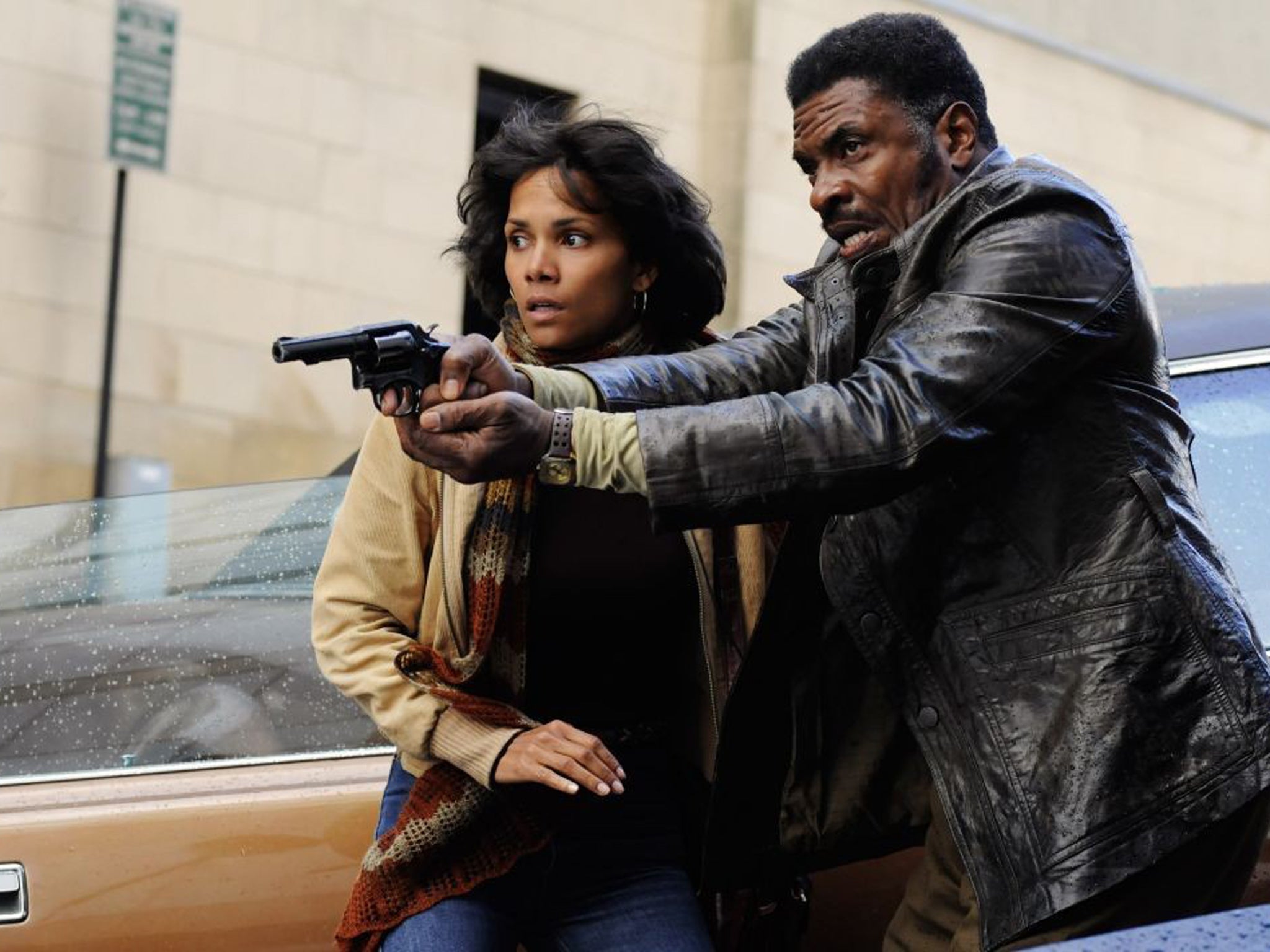Jonathan Romney on Cloud Atlas: Bizarre folly with a talent to bemuse
A top team and technical wizardry cannot save this disappointing adaptation of a cult novel

One of the dubious advantages of CGI is that it allows film-makers to adapt stories previously considered unfilmable. A million raging orcs, a boy in a boat with a tiger? Thanks to the mighty pixel, not a problem.
What makes fictions genuinely deserve the tag "unfilmable" is not that they contain astounding images – rather, that they propose some formal challenge that doesn't chime with the narrative conventions of cinema. Take David Mitchell's novel Cloud Atlas, now brought to the screen by Lana and Andy Wachowski (The Matrix) with Germany's Tom Tykwer (Perfume). The book tells six stories, each coherent and linear in itself, but confounding in the way they are combined. Each narrative is interrupted by another, very different in style and genre, implying that all stories are related, and that the characters are somehow reincarnations or twins of each other.
Written and directed by Tykchowski (if I may roll the trio into one), the filmed Cloud Atlas is a bizarre folly. With the siblings and Tykwer shooting separate segments, Cloud Atlas takes in two portions of science fiction, a 1970s-set thriller, a 19th-century travelogue and 1930s melodrama. Given how fanciful the production is, it's ironic that the most successful strand – the only one that's genuinely entertaining – is a no-frills farce starring Jim Broadbent as a bumbling publisher of the Snipcock and Tweed school, who finds himself incarcerated in a prison-like old people's home.
The film contains something to bemuse everyone. Jim Sturgess plays a voyager of the 1800s who befriends an escaped slave (David Gyasi). Ben Whishaw is a young composer in the 1930s who inveigles himself into the household of an elderly maestro (Broadbent again). In 1973 San Francisco, an intrepid reporter (Halle Berry) investigates a corporate conspiracy. In Seoul in 2144, a genetically engineered "fabricant" (Doona Bae) questions the destiny of her servant class. And on a devastated Earth where society has reverted to quasi-prehistoric tribes, quasi-savage Hanks and techno-sophisticate Berry battle to save humanity.
Over a six-story, 500-year span, the actors play multiple roles. Mostly you can tell who's who, but at moments you might detect a familiar twinkle through layers of latex and guess that it's Hugh Grant squinting out. Also donning the slap are Susan Sarandon, James D'Arcy and Asian star Xun Zhou. It's all very odd: several Caucasian actors play Asian roles, with make-up reshaping their eyes – a distracting effect recalling the racial stereotypes of the time when Marlon Brando would play Japanese for laughs. Conversely, we also get Korean actress Bae playing a Victorian maiden, and Halle Berry a German Jewish woman. And Hugo Weaving drags up to play a ferocious nursing-home matron. The point being made is that there are no natural boundaries in human existence, that race and sex are arbitrary distinctions (Lana Wachowski, remember, was formerly Larry).
Fair enough, but the film becomes a game of spotting who's really who, recalling John Huston's 1963 novelty thriller The List of Adrian Messenger, in which the drama was less important than guessing which false nose was concealing Tony Curtis.
No doubt Cloud Atlas was a rare old lark for the cast, but the drawback is that it gives Tom Hanks the chance to be terrible in more ways than we ever imagined. Everyone else acquits themselves pretty well, and Broadbent is superb – but Hanks is shocking, whether as a cartoon Irish writer-thug, a seedy Scottish landlord or a ragged future primitive intoning folksy neo-English as if trying to memorise Tom Waits lyrics by reciting them backwards.
If the film had retained the shape of Mitchell's original, it might have been on to something. The book moves along its chain of stories and back again; reading it is like slowly being lowered down a well, then pulled up. The film, however, zaps wildly between mingled fragments of story, so that nothing gathers momentum. The Korean episode contains flashy CGI images of a future Seoul, but it's the same old familiar Blade Runner cityscape, and the film-makers seem to feel it's barely worth lingering on. Every image, because it zips by so quickly, is devalued.
The ending wraps up the various themes with the twinkly aperçu that storytelling lasts for ever, because it's what makes us human. Yet there's no real curiosity here about the nature of narrative. All the directors do is illustrate each of Mitchell's strands visually, with no attempt to find a filmic equivalent of his literary conceits. That would require a Charlie Kaufman or Paul Thomas Anderson. Tykchowski's Cloud Atlas is just nebulous, and stranded without a map.
Join our commenting forum
Join thought-provoking conversations, follow other Independent readers and see their replies
Comments